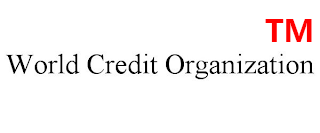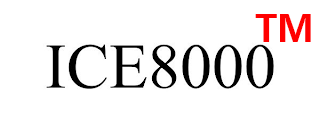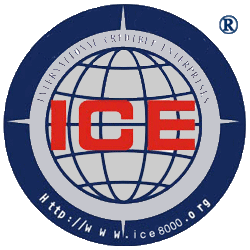ICE8000 Corporate Corporate Governance Standard


ICE8000 International Credit Standard System
Corporate Corporate Governance Standard
(Version: ICE8000-161-20120308-20140925-3) (This standard) Writer: Fang Bangjian ; proposer: Fang Bangjian ; deliberative body: World Credit Organization Credit Standards Committee; effectiveness level: administrative resolution
Chapter I General Provisions
1.1 In order to help enterprises improve corporate governance, promote social integrity, reduce transaction costs, and enhance human well-being, the World Credit Organization (WCO) develops this standard in accordance with internationally accepted legal principles and international practices.
1.2 The main legal basis for the development, application and implementation of this standard is as follows:
(1) The principle of freedom of the Constitution. The constitutions of the vast majority of countries in the world give people the freedom to defend their legitimate rights, the freedom to maintain social justice and the freedom to express their opinions.
(2) The principle of public order and goodness of law. This legal principle gives people the right to maintain social justice. The basic principles of civil law in most countries of the world include the principles of public order and good customs.
(3) The principle of good faith in law. This legal principle gives people the obligation of good faith. Most countries in the world regard the principle of good faith as the basic law of their civil and commercial laws.
(4) The principle of freedom of contract in law, also known as the principle of free agreement. This legal principle gives people the freedom to enter into a civil contract. The basic principles of civil law in most countries of the world include the principle of freedom of contract.
1.3 The conduct of the application and implementation of this standard shall be deemed to be the tripartite or multi-party contractual act of the World Credit Organization (WCO) in Delaware, USA, as an attestation or supervisor, and The relevant disputes arising from this act are applicable to and protected by the laws of the State of Delaware and the United States, and the jurisdiction is also the International Court of Ethics or the Delaware Court of the United States and the United States Federal Court. If the parties have agreed otherwise or otherwise stated in the applicable law and/or jurisdiction, the binding does not involve the World Credit Organization (WCO).
1.4 The enterprises referred to in this standard refer to various types of for-profit organizations, namely: various types of organizations that use profits for investors' distribution, such as: limited companies, joint stock companies, etc.
The term "legal person" as used in this standard refers to an organization that has the status of a legal person and is independently responsible for the outside, rather than a legal representative or actual controller.
The corporate legal person referred to in this standard refers to various types of organizations that are profitable and have legal personality.
The term "unlawful persons" as used in this standard refers to various types of organizations that are profitable but do not have legal personality, such as unlimited partnerships.
The corporate governance of corporate governance, also known as corporate governance or corporate governance, can be understood in three ways:
(1) Corporate governance refers to the company's shareholders' meeting, the board of directors, the board of supervisors, and the manager. In accordance with the articles of association or contract, the company exercises the rights and obligations of the legal person.
(2) Narrow corporate governance refers to how the company handles the relationship between internal shareholders, directors, supervisors and managers.
(3) Generalized corporate governance refers to how the company handles the relationship between internal shareholders, directors, supervisors and managers, and the relationship between the company and its stakeholders (such as employees, customers, the public, etc.).
1.5 The governance of all types of corporate legal persons may be voluntarily applied to this standard. The management of unincorporated enterprises may voluntarily refer to the application of this standard.
Enterprises that voluntarily apply this standard may clearly indicate in their articles of association, contracts, resolutions and other documents that the enterprise applies the “Corporate Corporate Governance Standards of the ICE8000 International Credit Standard System”.
1.6 Corporate corporate governance, following the principles of integrity, fairness and justice.
1.7 All parties applying this standard shall abide by the principle of good faith, moral bottom line and social responsibility bottom line in the process of applying this standard, and exercise and assume the rights and obligations stipulated in this standard.
1.8 All parties to this standard are deemed to have fully understood and committed to comply with all the terms of this standard. However, if any party to this standard finds any unfairness in any of the provisions of this standard, it has the right to publicly declare that it is not subject to public disclosure of the relevant circumstances and reasons and written notice to the World Credit Organization (WCO). Terms and conditions.
Chapter II Requirements for Corporate Governance Structure
2.1 The corporate governance structure referred to in this standard refers to the organizational structure of the legal person, that is, the relationship between the four organizational organizations, the board of directors, the board of supervisors, and the manager. The corporate governance structure is generally determined by law (such as company law), corporate charter or related contract. The corporate governance structure also belongs to the system category, and it is the most fundamental system of an enterprise.
2.2 Corporate governance structure should generally consist of the following four parts:
(1) The shareholders' meeting or the general meeting of shareholders, composed of the shareholders of the company, reflects the ultimate ownership of the enterprise by the owner.
(2) The board of directors shall be elected by the general meeting of the company to make decisions on the development goals and major business activities of the enterprise and safeguard the rights and interests of the investors. If the company's shareholders reach three, the board of directors should be established.
(3) The Board of Supervisors is the supervisory body of the enterprise and plays a supervisory role in the financial affairs of the enterprise and the behavior of the directors and operators.
(4) The manager, appointed by the board of directors or the shareholders' meeting, is the operator and executor.
2.3 The establishment and operation of corporate governance structure should follow the following principles:
(1) Clear principles of duties
Each component of the corporate governance structure of the enterprise shall have a clear division of labor. On this basis, each shall perform its duties and assume its responsibilities, avoiding confusion caused by unclear duties and unclear division of labor, and affecting the exercise of the normal duties or the entire function of each part. Play.
(2) Effective checks and balances
There is a need to effectively achieve checks and balances between the various parts of the corporate governance structure, including checks and balances between different levels of institutions, and checks and balances between different stakeholders. Without effective checks and balances, it is difficult to achieve fairness.
(3) Principle of coordinated operation
There are internal checks and balances between the various components of the corporate governance structure, but for the outside, coordination and cooperation are needed. The legitimate rights and interests of external stakeholders cannot be affected by internal contradictions. Before the formation of a corporate resolution, the various components of the corporate governance structure should be fully negotiated and debated. However, after the formation of the corporate resolution, the various components of the corporate governance structure should be coordinated and coordinated to ensure the smooth resolution of the enterprise. Implemented.
(4) Information sharing principle
Each part of the corporate governance structure of the enterprise shall disclose information and share information with each other. The sharing of information can not only resolve suspicions and contradictions, but also be one of the prerequisites for making correct decisions.
2.4 The following phenomena generally mean that there is a risk of corporate governance structure loss, so companies should pay full attention to and improve the corporate governance structure in a timely manner:
(1) The chairman of the board of directors oversteps the managerial affairs, and the manager oversteps the board of directors;
(2) The chairman and manager are the same person;
(3) The offside or absence of duties of directors, supervisors and managers;
(4) The board meeting and the manager's office meeting are always held together, or the participants can't tell whether it is a board meeting or a manager's office meeting;
(5) The board of directors or the board of supervisors or shareholders meeting has not been held for a long time;
(6) The director or supervisor or manager or chairman is not aware of his powers and responsibilities;
(7) There is no resolution document of the board of directors or the board of supervisors;
(8) Directors, supervisors and senior management personnel are not resigned normally;
(9) The shareholders reached three, but the board of directors was not established;
(10) Shareholders to the media or relevant departments to complain about the enterprise.
Chapter III Requirements for Corporate Corporate Governance System
3.1 Corporate corporate governance system refers to the various systems that operate and improve the corporate governance structure.
3.2 To establish a corporate governance system, generally the following requirements should be met or noted:
(1) The middle and senior personnel of the enterprise should learn and apply the "ICE8000 International Credit Standards System Meeting Standards" to ensure the quality of the meeting.
(2) Senior executives such as directors, supervisors, managers and deputy managers of the company shall regularly study the articles of association, accurately understand the contents of corporate governance related to corporate governance, and accurately understand their boundaries of powers and responsibilities and methods of exercise.
(3) The company's articles of association are the highest documents of the enterprise. The enterprise shall hold the shareholders' meeting, the board of directors and the board of supervisors regularly or irregularly in accordance with the regulations.
(4) The shareholders' meeting, the board of directors, the board of supervisors, and the manager shall not mutually interfere with each other. The decision made by the ultra vires party shall not be invalid, and the ultra vires party shall bear the corresponding legal and credit responsibilities.
(5) According to the charter and related systems and contracts, the corporate governance structure chart should be drawn so that the employees or stakeholders can know the corporate governance structure.
(6) Directors, supervisors, managers and other personnel shall be replaced periodically or irregularly in accordance with the regulations, relevant systems and contracts.
(7) Before the decision-making meeting is held, the topics, time and place of the meeting shall be promptly notified to the persons entitled to participate.
Chapter IV Liability for breach of contract and method of investigation
4.1 If the party violates the provisions of this standard, it shall bear the following liability for breach of contract:
(1) The corresponding legal liability, namely: the legal punishment prescribed by the relevant applicable law.
(2) Corresponding credit responsibility, that is, to bear credit punishments such as internal complaints, public complaints, credit warnings, internal exposure, public exposure, joint exposure, etc.
(3) The corresponding industry self-discipline responsibility, namely: announcement of criticism, fines, cancellation of credit card, prohibition of self-discipline and other disciplines.
(4) If the breach of contract causes losses (including material damage and mental damage) to others, it shall be liable for compensation. If the breach of contract constitutes a malicious dishonesty, it shall also make punitive damages to the infringed person in accordance with international practice and the principle of common law.
4.2 Method of investigation of breach of contract liability:
(1) According to the "ICS8000 International Credit Standard System Internal Complaint Standard" or "ICE8000 International Credit Standard System Public Complaint Standard" or "ICE8000 International Credit Standard System Credit Warning Standard" or "ICE8000 International Credit Standard System Internal Exposure Standard" or "ICE8000" International Exposure Standards for Public Credit Standards or Joint Exposure Standards for ICE8000 International Credit Standards System for credit complaints and credit penalties;
(2) Applying for arbitration under the International Credit Dispute Arbitration Commission in accordance with the ICE8000 International Credit Standards System International Credit Dispute Arbitration Standard, without the need to submit a separate arbitration agreement;
(3) Apply to the International Moral Court for trial in accordance with the ICE8000 International Credit Standards System International Credit Dispute Trial Standard;
(4) If the defaulter has the membership of the World Credit Organization (WCO), the parties also have the right to make a complaint in accordance with the World Credit Organization (WCO) Member Supervision Standards;
(5) File a lawsuit in the US Delaware Court or the US Federal Court in accordance with the laws of the State of Delaware or the United States federal law.
4.3 The responsibility for breach of contract in this standard shall be based on the principle of ignoring:
(1) Only the aggrieved party will take the initiative to pursue the investigation, and the defaulting party will bear the corresponding liability for breach of contract;
(2) The aggrieved party has the right to decide whether to initiate the corresponding accountability procedure for breach of contract;
(3) The aggrieved party has the right to understand the defaulting party or reach an agreement with the defaulting party.
4.4 For employees or agents who participate in, execute, or assist the parties to breach the contract, the aggrieved party has the right to pursue its corresponding responsibility unless it proves that it is not at fault.
4.5 Violations of the provisions of this standard may and should be considered as an independent breach of contract or dishonesty. If the relevant parties appear in the process of applying this standard, such acts as fraudulent, covert, defamatory, insulting, and denying others' credit evaluation rights, the act is an independent malicious dishonesty act or an independent serious malicious dishonesty. The parties concerned have the right to merge. Investigate or separately pursue the responsibility of the independent dishonesty.
4.6 The World Credit Organization (WCO) shall bear economic compensation for its own faults, and the expenditure for economic compensation shall be included in the financial plan of the World Credit Organization (WCO) for the next year. If the economic compensation is relatively large, compensation shall be made in each year.
After accepting economic compensation, the World Credit Organization (WCO) has the right to recover losses from units or individuals responsible for acts of dishonesty with gross negligence or subjective intent.
Chapter V Supplementary Provisions
5.1 This standard shall be implemented as of the date of promulgation.
5.2 The terminology involved in this standard, if its meaning is not agreed in this standard, its meaning is described in the ICE8000 International Credit Standard System International Credit Industry Terminology.
5.3 All relevant parties submit various types of materials submitted to the World Credit Organization (WCO) (or ICE8000 Credit Agency) in accordance with this standard. For the copyright agreement, see the ICE8000 International Credit Standard System Document Copyright Management Standard.
5.4 If the relevant parties know or ought to have known that any of the terms or conditions of this standard have not been complied with, but still do not expressly file a written objection in time for this non-compliance, it is deemed to waive their right to file an objection. The waiving party shall bear the legal consequences such as losses caused by the waiver, and the World Credit Organization (WCO) and other parties shall not be responsible for this.
5.5 This standard will be revised and improved. All parties applying this standard should pay full attention to the revision of this standard and apply the latest version of this standard, but the behavior that occurred before the revision of this standard may not be subject to the new revised clause. The official website of the latest Chinese version of this standard is: /aenhw/gc/161.html .
5.6 The copyright of this standard belongs to the World Credit Organization (WCO), members can use it for free and unlimited use; non-members can use it free of charge for study, training, research, self-use, reprint, citation, adaptation, reference, reference under the premise of indicating or declaring the source. , reference. No unit or individual may plagiarize plagiarism or disguise plagiarism or otherwise infringe. Otherwise, we will jointly expose the infringing units, individuals and related personnel after the investigation of the infringement facts is clear (to issue a credit wanted order to the society). And reserves the right to pursue their legal responsibility. Do not infringe or infringe.
5.7 The standard version number is expressed as: ICE8000-abcd, where: the front-end ICE8000 indicates that this standard is one of the standards of the ICE8000 international credit standard system; a is the serial number of the standard in the ICE8000 system standard, if this standard is Abolished, the serial number is sometimes transferred to other standards; b is the initial writing time of this standard; c is the latest revision time of this standard; d is the number of revisions of this standard.
5.8 This standard is interpreted by the World Credit Organization (WCO).


